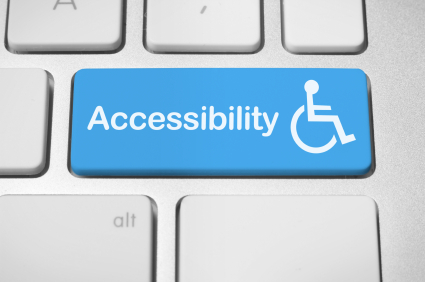
The World Wide Web is advancing as a vital resource for users to access information, which is now surpassing traditional media networks. With the availability and convenience of accessing information, we have seen the Internet generate a vast range of online opportunities for businesses, including interaction with their customers, target specific products to their desired audience and improved marketing opportunities.
With an increase in businesses operating online and countless websites emerging, there is a significant need for websites to improve their accessibility for the purpose of giving users equal access to content and functionality of a site.
The purpose of this article is to define Web Accessibility, its importance, and how this can improve user experience for your website.
Introduction to Web Accessibility
Web accessibility refers to improvements in navigation and interaction by removing barriers preventing the accessibility of a website. The development of an accessible site means specific standards need to be applied, for the purpose of establishing understandable and operable designs and content to cater for users.
Although this was originally designed to assist people with disabilities, accessible websites have proven to support a vast audience, with a strong importance to aid the elderly and low literate personnel. With the increasing awareness of Web Accessibility, it has become a beneficial element to enhance user experience in our technologically driven society.
Understanding the Importance of Web Accessibility
With the Internet increasingly becoming a vital role in our everyday lives, Web Accessibility is important for online businesses to change their websites to become more accessible for users. Selecting an accessible approach in the designing stage and when implementing your content, will provide several opportunities and benefits to enhance the success of your site.
We have identified three major benefits of Web Accessibility, when adopting this approach:
1. Increased Audience Reach
Adapting the development of an accessible site for users has proven to vastly support an increase in traffic and visitors to the desired website. In shifting towards an accessible website, you are inevitably expanding your audience to a larger group of users. Therefore, enhancing the traffic and improving the site’s visibility.
2. Improved Efficiency and Site Usability
Providing the user with ease of navigation and convenience of efficient usability will compel the visitor to stay on your website longer, with a higher chance of becoming a potential conversion or lead. The approach of adapting your current website to become more accessible, will better improve your site’s efficiency and usability for users.
3. Increased Search Rankings and Site Visibility
Increasing a website’s search ranking and results on search engines, such as Google, will improve the site’s visibility for long-term success, and therefore enhance audience reach and traffic. Web Accessibility also provides an increase in search engine optimisation for your website.
As a result, it is evident that a Web Accessibility approach will provide additional benefits to the desired website, in order to increase audience reach and awareness, improve efficiency and site usability, and increase search engine rankings and visibility.
Recommendations for Improvement
Understanding the importance of Web Accessibility and adapting your site to incorporate this approach -are two very different tactics. One is gaining knowledge, and the other is taking action to improve your website.
The Newpath WEB team have identified key recommendations and practical guidelines to better improve your website’s accessibility.
1. Alternative Content
An important principle to improving your website’s accessibility is the implementation of content that is user friendly to site visitors. An important technique is to provide text for visual content using the HTML alt attribute.
2. Navigation
Website navigation is an important element when in the designing phase, to ensure your site’s layout is structured to meet the user’s needs. A well-structured website layout will contain simple navigation, clear sections, consistency, and maintained styles, fonts and colours.
3. Contextual Links
Most website links lack in description, information or where to direct the user. Therefore, in order to improve your site’s accessibility and user experience for your visitors, it is highly recommended to implement descriptive contextual links.
4. Colours
In order to improve your website’s accessibility, our final recommendation is to consider adapting your site’s colours to cater for users. We also suggest maintaining a high colour contrast, which will vastly improve the visual aspect and accessibility of your site.
Newpath WEB is here to guide you in the right direction for accessible designs and development for your website. If you are interested in a redesign of your current site, or a new development, please contact us here.




